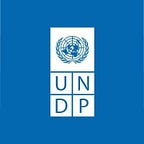What does inequality look like?
Photographer Jodi Hilton traveled to five countries in Europe and Central Asia to document inequalities for UNDP’s Regional Human Development Report. Here is what she saw through her lens.
by Jodi Hilton
As an experienced photojournalist, I’d spent a good part of my career working in impoverished communities and with people who were marginalized due to religion or ethnicity. So the concept of inequalities was familiar terrain for me.
Although Eurasia is a vast region that includes many different countries and peoples with diverse histories, cultures, and religion, some strong similarities were apparent across the places I visited.
Each of the countries I photographed in are post-Socialist societies, where people are struggling to find their way in fledging capitalist democracies. The socialist systems that existed aimed to create economic equality, even if they did not succeed. The new democracies, while elevating the most skilled and powerful people, are struggling to keep everyone in decent living standards. Many of the people I met seemed unmoored by the changes they’d experienced. In some ways, they had felt their lives were more secure under Socialist regimes.
Despite the different contexts of these countries, the inequalities I saw all stemmed from the shift from one political reality to another. Here’s a snapshot of what I saw and captured with my eyes and lens.
In Kyrgyzstan, I visited a cluster of small villages that didn’t have easy access to clean water. The people depend on narrow manmade irrigation canals. The water they drink is often contaminated, exposed to animal waste and natural debris. As a result, many, especially children, suffer from serious health problems like hepatitis. But this was not always the case. The Soviets built water plants and networks, but since the dissolution of the USSR, they fell into disrepair.
I also visited a small village named Razlovci in the former Yugoslav Republic of Macedonia which suffers from high youth unemployment numbers, with emigration a pressing issue. Before the 1990s, the village hosted a big factory that sustained many families, but that factory is now closed. Many residents are elderly and the few young people I met told me they hoped to leave the village soon, whether it was to go do seasonal farm work in Italy, or to pick up a factory job in a nearby city.
Armenia has a gender gap in politics, which I was interested in looking at. Since the transition, women have had a limited role in governance, which becomes more acute at the higher levels of power. I met with, and told the stories of women who are establishing lives of public service at the local level, with the goal of eventually evening out gender disparities in politics.
It’s impossible to highlight inequality in Eastern Europe without including the Roma people, who are, in nearly every context, the least advantaged group.
In Serbia, I met Ali and Fljurija, a Roma family displaced from Kosovo*. After the disintegration of Yugoslavia, the Roma in Kosovo found themselves between warring parties, victims of accusations and atrocities. Many survivors dispersed, only to become internally displaced. Among the Roma who have fled to Serbia, many lack the basic documents needed to apply for social assistance, apply for a job or enroll in the medical system.
I traveled to Mariupol, Ukraine, an industrial city near the frontline of the conflict between Ukrainian and Pro-Russian forces. Ukraine has one of the highest rates of HIV/AIDS in Eastern Europe. HIV appeared in Ukraine in 1987 and by the mid-1990s, after the dissolution of the USSR, an alarming epidemic emerged.
At a women’s prison, I met two inmates, Liudmila and Nadeshda, both HIV positive. They were doing relatively well thanks to a regime of antiretroviral therapy. Neither of them realized they were HIV positive until being imprisoned, so prison most probably saved their lives.
Outside the prison walls, I met women who told a much darker story.
According to the report, it’s the transition that is putting people’s lives to the test. And when these major political changes occur, what often goes unattended are the small but significant impacts on people’s everyday lives.
There are 37 million people in precarious jobs across the region. That’s putting pressure on social safety nets, and making it difficult for many families to get treated and send their kids to school. AIDS-related deaths have tripled, and exclusion of minorities, women, people living with disability and others can be intense.
But I also saw efforts to tackle issues of inequality. In Armenia I met women trained by a UNDP program aimed at empowering women in a country where they are vastly underrepresented in governance. In Ukraine, UNDP is procuring medicines on behalf of the government to make sure that those who need receive them. In the former Yugoslav Republic of Macedonia, the government has put into place a hugely successful self-employment programme.
Inequalities are present and problematic across the region. At the same time, it was inspiring to see the dedication of individuals — like Pavel, an HIV clinic director in Ukraine; Arpine, an Armenian city councilor; and Nevena, the lawyer working with Ali and Fljurija to get their papers — who are all working in conjunction with governmental structures on solutions to create stronger and more equitable societies.
*References to Kosovo on this text shall be understood to be in the context of the UN Security Council Resolution 1244 (1999)
If you enjoyed this piece, remember to click the heart below and recommend the story to others.
